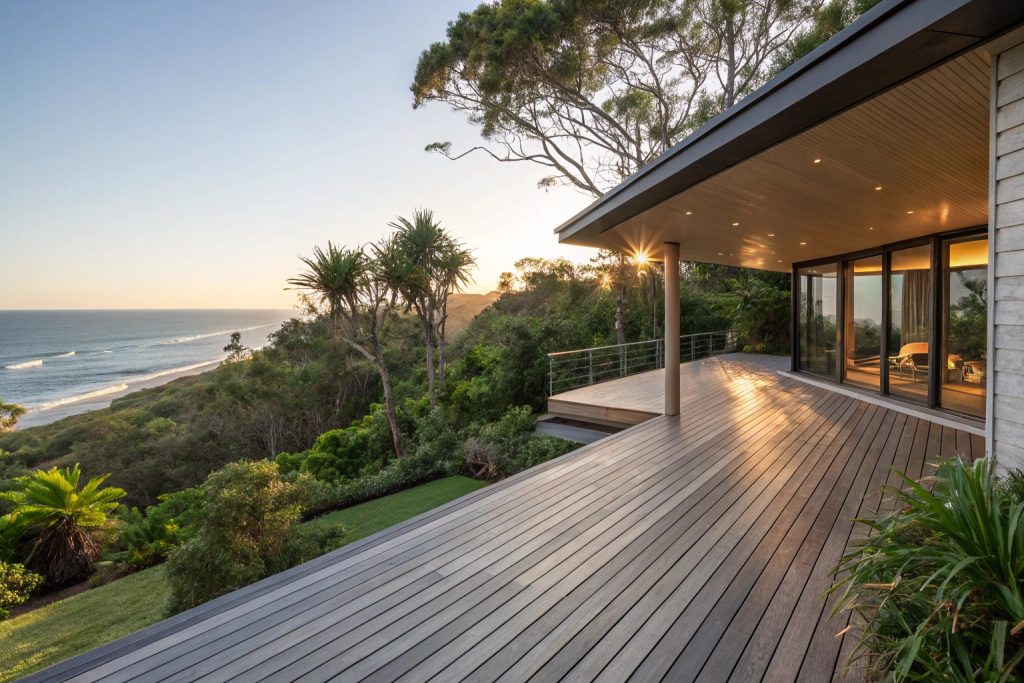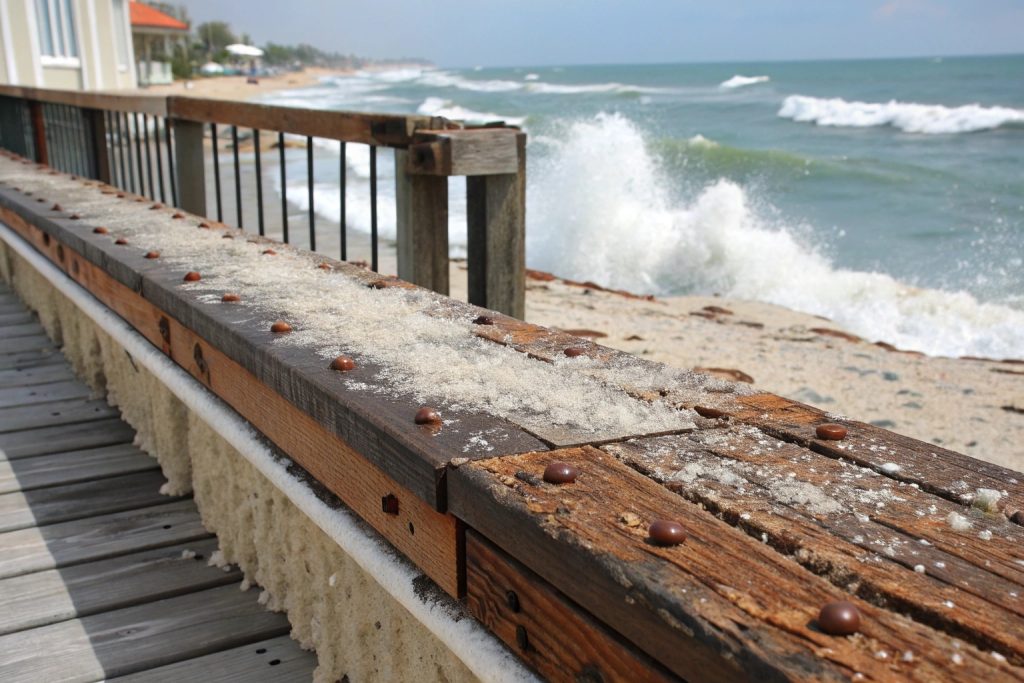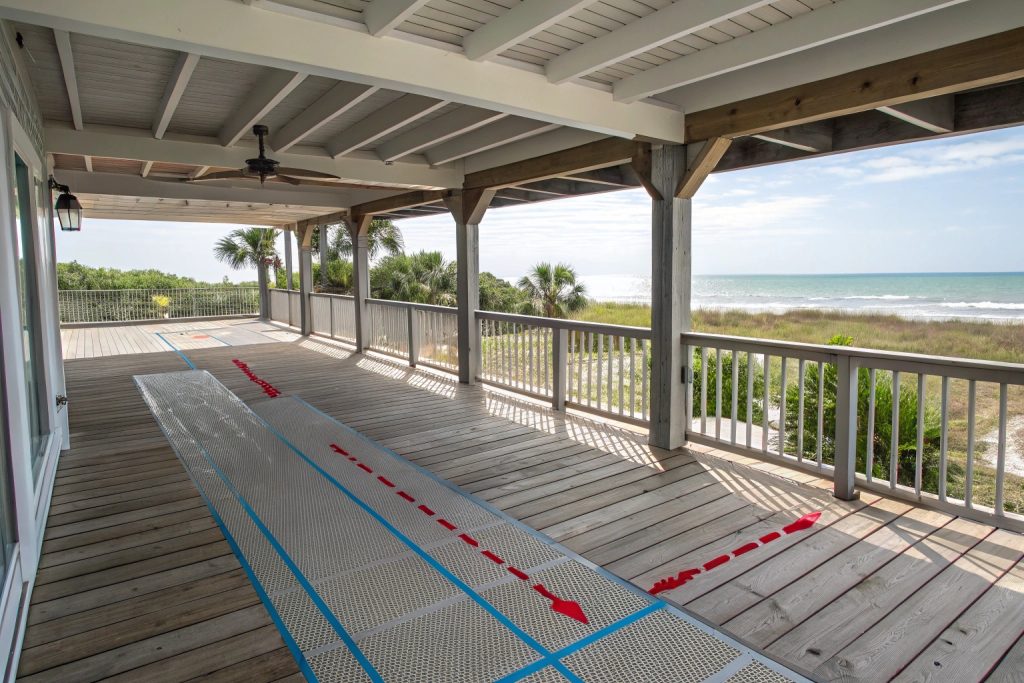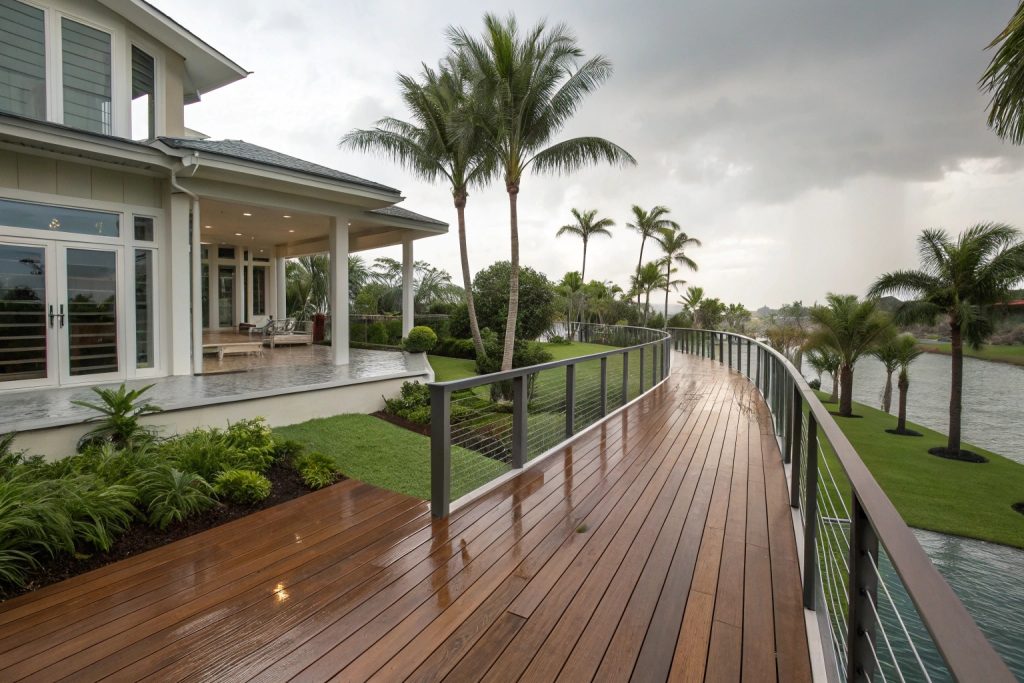Choosing between a multi-level and single-level deck is one of the biggest decisions homeowners face…
The Unique Microclimate of Palm Beach: Why It Matters for Decking
Palm Beach sits in this weird little pocket of the Gold Coast that gets its special weather cocktail. Yeah, the whole Gold Coast gets the subtropical climate thing, but Palm Beach? It’s got quirks.
You’ve got Burleigh Headland to the north acting like a bit of a weather shield, and Currumbin Rocks to the south doing the same. This creates what weather nerds call a “microclimate”—basically, Palm Beach has its own weather personality.
What does this mean for your deck? A few things:
- More intense afternoon sun exposure than the suburbs, just a few km north
- Stronger salt-carrying easterlies than in the inland suburbs
- Less protection from summer storms coming in from the west
- Higher humidity lingering after rain (the hills trap it in)
Sun Exposure Mapping: Designing Around Daily UV Patterns
The Queensland sun is no joke. We get about 30% more UV than southern states, and Palm Beach decks can suffer if they’re not planned properly.
When we design decks at Palm Beach, we don’t just think about the view. We pull out a sun path diagram and actually map how the sun’s gonna hit your outdoor space across different seasons and times of day.

Morning eastern exposure? That’s usually gentler, perfect for breakfast nooks.
Western afternoon sun? That’s brutal—especially December through February. You might need:
- Extended roof overhangs
- Well-placed screening plants
- Pergola with adjustable louvres
- UV-resistant decking materials with reflective properties
One client on Twenty Eighth Avenue had us build a deck where the western edge got absolutely smashed by afternoon sun. We ended up incorporating a series of vertical screens that blocked the worst of the UV but still let the breeze flow through. They told me last week it’s made all the difference between a deck they used sometimes and one they live on.
Managing Salt Spray: Protection Strategies for Oceanfront Decks
If you’re within about 800m of the beach (and let’s face it, that’s most of Palm Beach), salt is your deck’s invisible enemy. That ocean breeze feels amazing, but it’s carrying tiny salt particles that settle on everything.
This salt draws moisture from the air and creates a corrosive nightmare for metals and some timbers. We’ve pulled up decking boards that looked fine on top, but underneath were a horror show of corroded fasteners and fittings.
For oceanfront decks in Palm Beach, we recommend:
- Marine-grade 316 stainless steel fasteners (not the cheaper 304 grade)
- Regular freshwater rinsing (especially after big easterly weather systems)
- Sacrificial anodes for metal components
- Salt-resistant hardwoods like spotted gum or ironbark
- Composite decking with specific coastal warranties

I had a client on Jefferson Lane who insisted on using standard galvanised fittings despite our advice. Two years later, we were back replacing everything—and it cost three times more than doing it right the first time would have.
Seasonal Considerations: Preparing Your Deck for Summer Storms
Palm Beach summer storms hit different. The way the mountains funnel weather systems right into us means we cop some spectacular downpours between November and March.
Your deck needs to handle sudden dumps of rain without flooding your house or turning into a swimming pool. Some things to think about:
- Adequate deck slope (we recommend a minimum 1:100 fall away from the house)
- Slightly wider-than-standard spacing between boards for quick drainage
- Raised door thresholds to prevent water ingress
- Strategic drainage solutions for covered areas
- Well-designed guttering that can handle Queensland deluges
A properly designed deck won’t pond water—it’ll shed it quickly and efficiently.
One of our Palm Beach projects incorporated a subtle channel drain at the house edge of the deck, disguised within the design. During that massive storm back in February, the owner sent us a video of water flowing perfectly through the system while their neighbour’s deck was overflowing into their living room.
Wind Patterns: Creating Comfortable Outdoor Spaces Year-Round
Palm Beach gets specific wind patterns that can make or break your outdoor experience. You’ve got:
- Morning offshore westerlies (usually mild but can be cool in winter)
- Strong afternoon nor’easters in summer (often bringing relief but sometimes salt)
- Occasional southerly busters after a hot day
- The dreaded westerly winds preceding storms
A good deck design works with these patterns, not against them. We look at:
- Strategic placement of privacy screens that don’t block cooling breezes
- Wind-break plants that filter rather than stop air movement
- Retractable awnings that can adjust to changing conditions
- Creating protected nooks for when the wind picks up
We built a deck on Nineteenth Avenue where the clients wanted full weather protection but still wanted it to feel open. We ended up designing a clever system of adjustable panels that could open completely on perfect days but close up when the westerlies picked up or the afternoon sun got too intense.
Temperature Fluctuation: Materials That Resist Expansion and Contraction
Palm Beach decks deal with temperature changes that would shock you if you measured them. On a summer day, surface temps can jump from 22°C at dawn to 70°C+ by mid-afternoon, then drop back to 25°C after a storm rolls through.

These wild swings make materials expand and contract like they’re breathing. Poor quality decking can’t handle this cycle, and you end up with:
- Cupping and warping boards
- Popped-up nail heads
- Splitting and cracking
- Gaps that grow and shrink seasonally
For Palm Beach conditions, we like:
- High-density hardwoods with known stability
- Modern composite decking with thermal expansion gaps
- Hidden fastening systems that allow for movement
- Proper acclimatisation of materials before installation
Last year, I replaced a deck for folks who’d used a cheap pine deck from a big box store. After just two summers, it looked like a roller coaster—wavy, warped, and unsafe. The replacement spotted gum deck costs more upfront but will easily last 3-4 times longer in our climate.
Humidity Factors: Preventing Moisture Damage in Coastal Decks
Palm Beach sits in this weird humidity zone. We’re not tropical Far North Queensland, but we’re definitely not dry either. Summer humidity regularly hits 80-90%, and that moisture loves to work its way into your decking materials.
This creates the perfect conditions for:
- Mould and mildew growth
- Internal rotting (especially in covered areas that don’t dry quickly)
- Weakening of structural connections over time
- Swelling and timber movement

The solutions aren’t complicated, but they need to be done right:
- Ventilation underneath and between all deck components
- Proper spacing to allow airflow around boards
- Water-resistant but breathable finishes
- Regular maintenance to spot early issues
One of the worst deck failures I’ve seen was a covered deck in Palm Beach where the builder didn’t allow for proper ventilation underneath. Within 18 months, the whole structure had to be ripped up due to concealed rot that spread through the framing.
Making Climate-Smart Decking Choices for Palm Beach
When you put it all together, building a deck in Palm Beach means thinking about our specific local conditions. The choices that make sense here might be different from even neighboring Gold Coast suburbs.
What matters most is working with someone who understands these local quirks. Our team has built hundreds of decks throughout the Gold Coast, but we approach each Palm Beach project with respect for its unique position.
Your Palm Beach deck can be beautiful, functional, and durable—but only if it’s designed specifically for where it sits. The right materials, thoughtful design decisions, and proper installation techniques make all the difference between a deck that struggles against our climate and one that works with it.
If you’re planning a deck in Palm Beach, let’s talk about your specific site conditions. We’ll help you make choices that give you an outdoor space that not only looks amazing on day one but still performs beautifully for years to come—no matter what weather our little coastal pocket throws at it.
